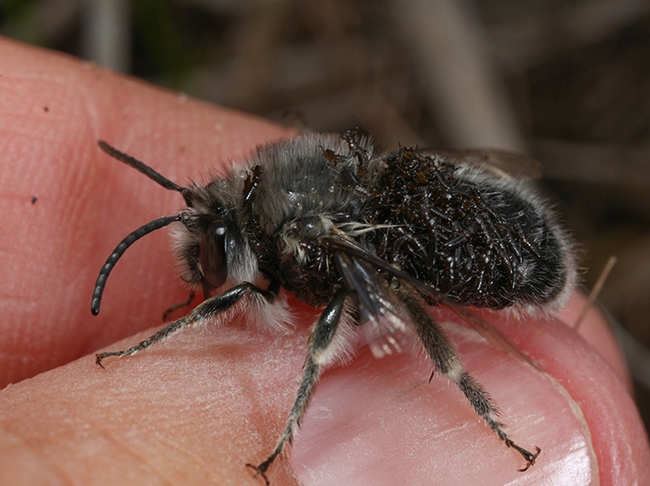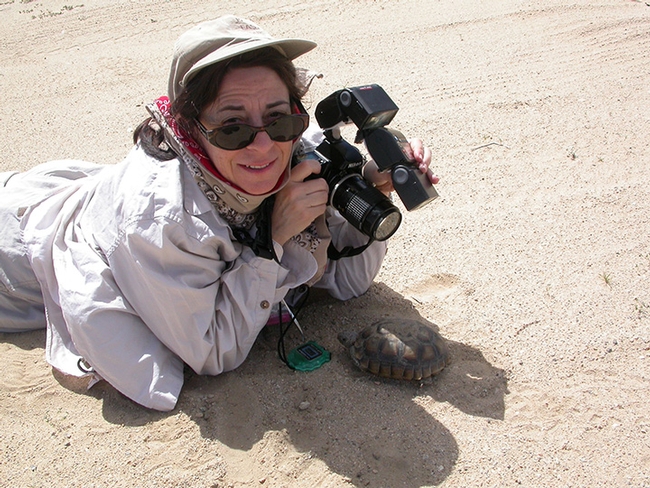- Author: Kathy Keatley Garvey

Persimmons, asparagus, figs and other crops distantly related to native California plants attract fewer pests and diseases than the closer kin, and thus receive fewer pesticide treatments, according to a newly published article by two UC Davis-linked scientists in the Proceedings of the Natural Academy of Sciences (PNAS).
Co-authors Ian Pearse, research ecologist with the U.S. Geological Survey and a UC Davis alumnus, and Jay Rosenheim, UC Davis distinguished professor of entomology, analyzed the 2011-2015 state records of pesticide applications of 93 major California crops.
“We hypothesized that California crops that lack close relatives in the native flora will be attacked by fewer herbivores and pathogens and require less pesticide use,” said Rosenheim, a 32-year member of the UC Davis Department of Entomology and Nematology faculty and a newly elected fellow of the Entomological Society of America.
Rosenheim and Pearse examined the pesticide applications against arthropods, pathogens, and weed plants and compiled the data into a comprehensive analysis.
Their findings appear in the PNAS article, “Phylogenetic Escape from Pests Reduces Pesticides on Some Crop Plants,” published Oct. 12. “Phylogenetic relationship” refers to the relative times in the past that species shared common ancestors.
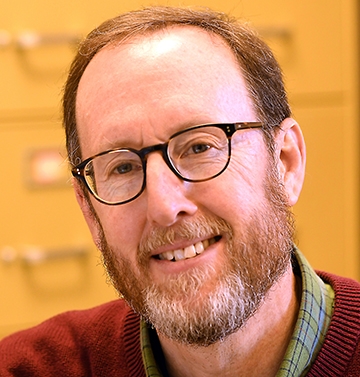
“In contrast, our study focuses on the roughly half of all herbivores and diseases that attack California crops and that are actually native to California. These organisms originally attacked members of the native California flora, but have now shifted to attack a novel host: the crop plant.”
However, “host shifts aren't always easy,” Rosenheim said. “It's relatively easy to shift to attack a close relative of a native host plant, but it's relatively hard to shift to attack a very different host plant.”
Said Pearse: “Our study shows that crops like dates, asparagus, figs, kiwis, or persimmons that are distantly related to native California plants--and thus separated by many million years of independent evolution-- are colonized by fewer pests and diseases.”
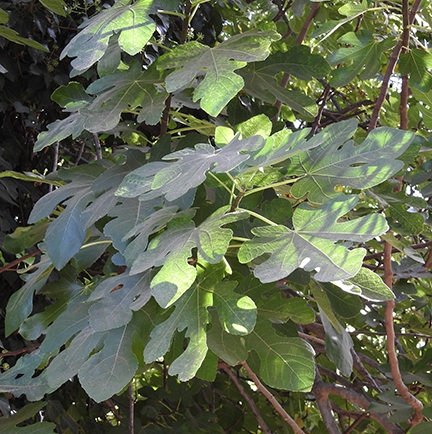
"The crops that require the most pesticide applications, Pearse said, "are those, like artichokes, blackberries, and sweet corn, that have close relatives in the Californian flora and are of high economic value per acre."
California's top agricultural crops include almonds, grapes, lettuce, strawberries, tomatoes and walnuts.
Rosenheim said persimmons are a good example “of the phenomenon we've studied: they have very, very few pests--almost zero in my experience--and that's probably because persimmons have no close relatives in the California native plant community.”
Pearse, a 2005 Fulbright scholar who received his doctorate in ecology from UC Davis in 2011, studying with Professor Rick Karban, joined the U.S. Geological Survey in Fort Collins in 2016. He focuses his research on invasive species and plant-insect interactions. Rosenheim researches insect ecology, with a focus on host-parasitoid, predator-prey, and plant-insect interactions, with direct applications to biological control.
“Pesticides are a ubiquitous (found everywhere) component of conventional crop production but come with considerable economic and ecological costs. We tested the hypothesis that variation in pesticide use among crop species is a function of crop economics and the phylogenetic relationship of a crop to native plants, because unrelated crops accrue fewer herbivores and pathogens. Comparative analyses of a dataset of 93 Californian crops showed that more valuable crops and crops with close relatives in the native plant flora received greater pesticide use, explaining roughly half of the variance in pesticide use among crops against pathogens and herbivores. Phylogenetic escape from arthropod and pathogen pests results in lower pesticides, suggesting that the introduced status of some crops can be leveraged to reduce pesticides.”

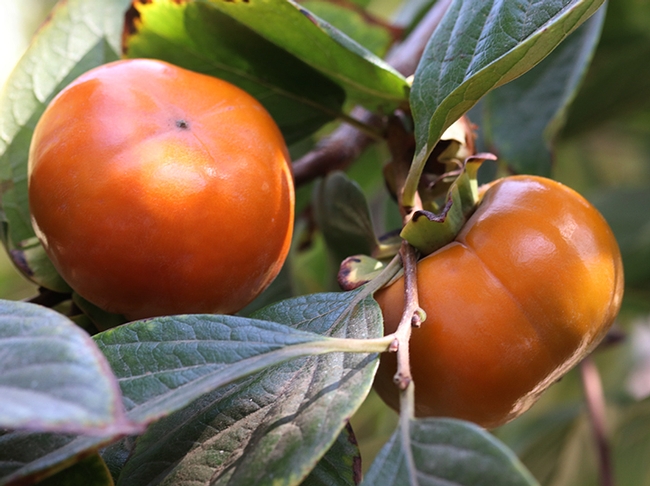
- Author: Kathy Keatley Garvey

ASD, which impacts the nervous system, affects 1 percent of the U.S. population or 62.2 million globally. An estimated 64 percent and 91 percent of the population are at risk genetically.
The researchers' latest paper, “Maternal Glyphosate Exposure Causes Autism-Like Behaviors in Offspring through Increased Expression of Soluble Epoxide Hydrolase,” appears in the current edition of the Proceedings of the National Academy of Sciences (PNAS). Glyphosate is a broad-spectrum systemic herbicide and crop desiccant used to kill broadleaf weeds and grasses that compete with agricultural crops.
“In the research of autism, brain-gut-microbiota axis plays a key role in ASD from human studies,” said lead researcher and neurobiologist Kenji Hashimoto of the Division of Clinical Neuroscience, Chiba University Center for Forensic Mental Health, Chiba, Japan. “Accumulating evidence suggests abnormal composition of gut microbiota in subjects with autism. In this study, we found abnormal composition of gut microbiota in offspring after maternal glyphosate exposure. Thus, exposure of glyphosate during pregnancy may cause abnormal composition of gut microbiota in offspring, resulting in the risk for autism.'
The drug discovered in the Hammock lab inhibits sEH, a natural enzyme that regulates epoxy fatty acids, “which control blood pressure, fibrosis, immunity, tissue growth, depression, pain and inflammation to name a few processes,” said co-author Hammock, a distinguished professor with a joint appointment in the UC Davis Department of Entomology and Nematology and the UC Davis Comprehensive Cancer Center. Human clinical trials underway to see if the non-addictive drug relieves chronic pain.
“It is critical to appreciate that mouse models are not absolutely predictive of the human situation,” Hammock said.“Similarly, maternal immune stress is simply a model that gives behavioral changes in the offspring. That said, it is a relevant model of abnormalities in mental development in the offspring. This is a widely used model of the effect of maternal stress on the next generation that has been established in many species, including nonhuman primates. Sadly, maternal stress was shown tightly associated with the mental state of human children as well.”

“Such studies are important to generate hypotheses of environmental risk,” said Hammock, who meshes his expertise in chemistry, toxicology, biochemistry and entomology, in his 50-year research to find a non-addictive drug to control chronic pain. “Because we only saw maternal immune stress at exceptionally high doses of glyphosate, our data fail to support the hypothesis that glyphosate exposure causes autism with expected dietary, environmental or even occupational exposure.”
The research drew financial support from the Japan Society for the Promotion of Science (to Hashimoto); and the National Institute of Environmental Health Sciences (NIEHS) River Award (to Hammock), and NIEHS Superfund Program (to Hammock). Hammock has directed the UC Davis Superfund Program for nearly four decades.
The Hashimoto-directed Chiba group has shown that these drug candidates prevent and even reverse a variety of chronic diseases of the central nervous system in mice and human cells including ASD like behaviors.
The 16 co-authors include Hammock lab researchers Jun Yang, Sung Hee Hwang and Debin Wan.
Yang said that the researchers “hypothesized that the role of the sEH is important in the pathogenesis of ASD in offspring after maternal glyphosate exposure based on our previous finding that sEH plays a key role in the development of ASD-like behavioral abnormalities in juvenile offspring after maternal immune activation (MIA), a prenatal environmental factor.”
Said Hwang: “Some epidemiological studies suggest an association between glyphosate use in agriculture and increases in autism like disorders. The doses we used in mice were so high that we fail to support glyphosate epidemiological associations between the herbicide use and the cause ASD-like behaviors.
The PNAS abstract:
“Epidemiological studies suggest that exposure to herbicides during pregnancy might increase risk for autism spectrum disorder (ASD) in offspring. However, the mechanisms underlying the risk of ASD by herbicides such as glyphosate remain unclear. Soluble epoxide hydrolase (sEH) in the metabolism of polyunsaturated fatty acids is shown to play a key role in the development of ASD in offspring after maternal immune activation. Here, we found ASD-like behavioral abnormalities in juvenile offspring after maternal exposure to high levels of formulated glyphosate.
“Furthermore, we found increases in sEH in the prefrontal cortex (PFC), hippocampus, and striatum of juvenile offspring and oxylipin analysis showed decreased levels of epoxy-fatty acids such as 8(9)-EpETrE in the blood, PFC, hippocampus, and striatum of offspring after maternal glyphosate exposure, supporting increased activity of sEH in the offspring. Moreover, we report abnormal composition of gut microbiota and short chain fatty acids in fecal samples of juvenile offspring after maternal glyphosate exposure. Interestingly, oral administration of TPPU (an sEH inhibitor) to pregnant mothers from E5 to P21 prevented ASD-like behaviors such as social interaction deficits and increased grooming time in the juvenile offspring. These findings suggest that maternal exposure to high levels of glyphosate causes ASD-like behavioral abnormalities and abnormal composition of gut microbiota in juvenile offspring, and that increased activity of sEH might play a role in ASD-like behaviors in offspring after maternal glyphosate exposure. Therefore, sEH may represent a target for ASD in offspring after maternal stress from occupational exposure to contaminants.
“Maternal exposure to high levels of the herbicide glyphosate may increase the risk for autism spectrum disorder (ASD) in offspring; however, the underlying mechanisms remain largely unknown. Maternal glyphosate exposure during pregnancy and lactation caused ASD-like behavioral abnormalities and abnormal composition of gut microbiota in murine male offspring. Soluble epoxide hydrolase (sEH) in the brain of offspring after maternal glyphosate exposure was higher than controls. Treatment with an sEH inhibitor from pregnancy to weaning prevented the onset of ASD-like behavioral abnormalities in offspring after maternal glyphosate exposure. The glyphosate exposures used here exceed any reasonable dietary, environmental or occupational exposure, but they indicate that increased sEH plays a role in ASD-like behaviors in offspring.”
- Author: Kathy Keatley Garvey
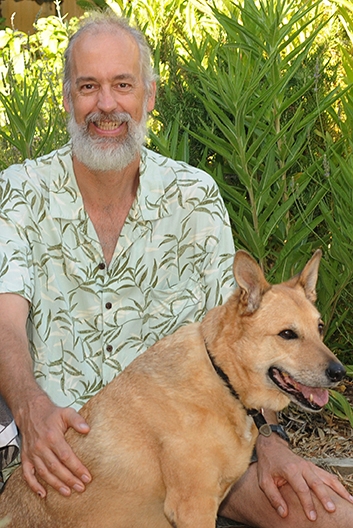
The research paper, “Introduced Herbivores Restore Late Pleistocene Ecological Functions” is the work of an 11-member international team led by Australian ecologist Erick Lundgren of the University of Technology, Sydney.
The authors pored over scientific literature; created a list of living and extinct herbivores over the last 126,000 years; and categorized them by their body size, anatomy, habitat, diet, and how their bodies digested the vegetation. Then they compared their lifestyles in overlapping regions.
Carroll, affiliated with the UC Davis Department of Entomology and Nematology, said one of the studies dealt with the abandoned hippos of Colombian drug lord Pablo Escobar (1949-1993), who purchased a male and three females in the 1980s from a California zoo and kept them in fields along the Magdalena River, northwestern Colombia. Without humans and other predators decimating them, the population today is 80 and is expected to reach 800 to 5000 by 2050.
The out-of-place hippos may be filling the exotic roles of extinct massive animals, such as giant llamas and rhinoceros-sized relatives, the ecologists said.
Said Carroll: “That paleontological analysis found that, amazingly, introduced herbivores– including Pablo Escobar's escaped Colombian hippos– often match the functional traits of extinct natives better than do those missing species' closest living native relatives. In this way, the ‘out-of-place' make the world more similar to the pre-extinction past. The ‘shoot-first- and-ask-questions later' approach as a maxim is as reckless as it sounds, and it's not going to sustain our life-saving drugs, nor the species we revere or ecosystems we rely on, into the future.”
“Many introduced herbivores restore trait combinations that have the capacity to influence ecosystem processes, such as wildfire and shrub expansion in drylands,” the team wrote.
As for feral hogs in North America, Carroll said their rooting increases tree growth and attracts bird flocks, like the ecological work of their extinct ancestors. Likewise, the feral horses and burros, known for their well-digging behavior, are replacing the original American horses, which went extinct 12,000 years ago.
In their abstract, the authors pointed out that humans “have caused extinctions of large-bodied mammalian herbivores over the past 100,000 years, leading to cascading changes in ecosystems. Conversely, introductions of herbivores have, in part, numerically compensated for extinction losses. However, the net outcome of the twin anthropogenic forces of extinction and introduction on herbivore assemblages has remained unknown. We found that a primary outcome of introductions has been the reintroduction of key ecological functions, making herbivore assemblages with nonnative species more similar to preextinction ones than native-only assemblages are. Our findings support calls for renewed research on introduced herbivore ecologies in light of paleoecological change and suggest that shifting focus from eradication to landscape and predator protection may have broader biodiversity benefits.”
Carroll, who also co-led an author group of the newly published “Coevolutionary Governance of Antibiotic and Pesticide Resistance” in the journal Trends in Ecology, said that the publications together “address both sides of the human-environment co-existence issue.”
“Reading the titles, you might not expect these two studies are two sides of the same coin,” Carroll said, “but for me they address both sides of the human-environment issue that most compels me: How can we create more workable, productive and respectful long-term relationships with other species? To help think about this as an evolutionary biologist, I divide the key challenges of human interactions with Nature into those that arise from competitor and parasite species that adapt too quickly for us to control, and those that arise in in our efforts to protect more valued species– like endangered large mammals– that adapt too slowly to survive human impacts.”
“Pesticide and drug resistance are nature's predictable resilience to our reliance on an escalating war of toxic eradication,” Carroll commented. “A broader understanding shows how we can develop our own behavior to instead cultivate susceptibility to control in species we fight, using both new and known practices for improved sanitation, locally diversified agriculture, and eating lower on the food chain to inflect their evolution in a positive direction. Similarly, after millennia of driving much of the Earth's giant mammal community to extinction, we need to step back from our reflex to extinguish the errant survivors to preserve a modern sense of what's natural, without stopping to consider how these new neighbors (commonly fading from their native lands) may restore ancient ecological functions our own ancestors extinguished not so long ago.”
Carroll emphasized that “neither of these studies dismisses the serious problems irruptive populations can cause for meeting our food, health and environmental needs, nor seeks to oversimplify complex challenges. But it's actually important to work against being limited by prejudicial generalizations that lead us to sort other species into ‘good' versus ‘bad' bins. This is a sensibility that ecologists in particular should strive to cultivate. To continue to feed and shelter ourselves and remain healthy while sharing the Earth with other species, we need to develop methods that respect the tremendous information and know-how inherent in each species. I want us to do a much better job of working with that intrinsic functional diversity and adaptive potential as our best resource for advancing resilient and biodiverse ecological systems into the future.”
Carroll and his wife, UC Davis ecologist Jenella Loye, own Carroll-Loye Biological Research, Davis. They engage in public health and environmental entomology and natural product development.
(Editor's Note: The lead author of Coevolutionary Governance of Antibiotic and Pesticide Resistance is Peter Søgaard Jørgensen, who during his University of Copenhagen graduate work, spent a year at Davis studying soapberry bug host adaptation in California with Scott Carroll. The duo led the multi-year international "Living with Resistance" pursuit at the National Science Foundation's National Socio-Environmental Synthesis Center. Carroll served as the senior author.)
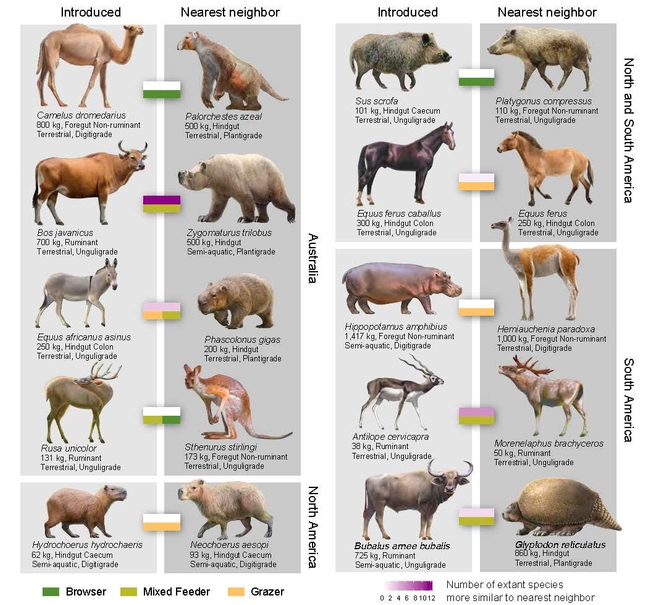
- Author: Kathy Keatley Garvey
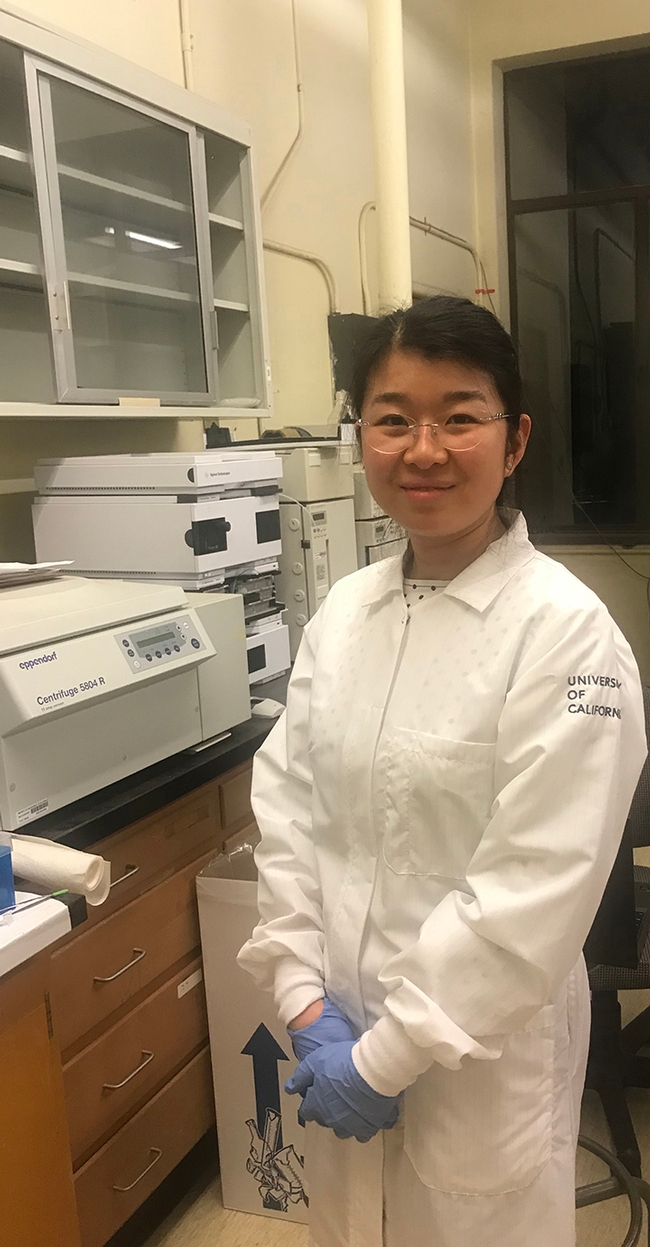
DAVIS--Newly published research in the Proceedings of the National Academy of Sciences (PNAS) indicates that a drug discovered and developed in the laboratory of Bruce Hammock,UC Davis Department of Entomology and Nematology, may have a major role in preventing and treating llnesses associated with obesity.
More than 43 percent of adults in the United States are obese, according to the Center for Disease Control and Prevention (CDC). Obesity increases the risk of coronary artery disease, stroke, type 2 diabetes, and certain kinds of cancer.
The drug, a soluble epoxide hydrolase (sEH) inhibitor, appears to regulate “obesity-induced intestinal barrier dysfunction and bacterial translocation,” the 12-member team of researchers from UC Davis, University of Massachusetts and University of Michigan discovered. The same non-opioid drug is being investigated in human clinical safety trials in Texas to see if it blocks chronic pain associated with diseases such as spinal cord injury, diabetes and inflammatory bowel disease.
The research, funded by multiple federal grants, is titled “Soluble Epoxide Hydrolase Is an Endogenous Regulator of Obesity-Induced Intestinal Barrier Dysfunction and Bacterial Translocation.”
“Obesity usually causes the loss of tight junctions and leaky gut,” said first author Yuxin Wang, a postdoctoral researcher who joined the Hammock lab in 2019 from the Department of Food Sciences, University of Massachusetts, Amherst. “In normal conditions, the gut mucosal barrier is like a defender to protect us from the ‘dirty things' in the lumen, such as bacteria and endotoxin. For obese individuals, the defender loses some function and leads to more ‘bad things' going into the circulation system, causing systemic or other organ disorders.”
Although intestinal dysfunction and other problems enhancing bacterial translocation underlies many human diseases, “the mechanisms remain largely unknown,” said Wang, who holds a doctorate in biochemistry and molecular biology from the Chinese Academy of Sciences. “What we found is sEH inhibition can repair the defender function (barrier function), decrease the ‘bad things' going into the blood (bacteria translocation), and reduce inflammation of fat.”
“Our research shows that sEH is a novel endogenous regulator of obesity-induced intestinal barrier dysfunction and bacterial translocation,” said corresponding author Guodong Zhang, a former researcher in the Hammock lab and now with the Food Science Department and Molecular and Cellular Biology Graduate Program at the University of Massachusetts. “To date, the underlying mechanisms for obesity-induced intestinal barrier dysfunction remain poorly understood. Therefore, our finding provides a novel conceptual approach to target barrier dysfunction and its resulting disorders with clinical/transitional importance.”
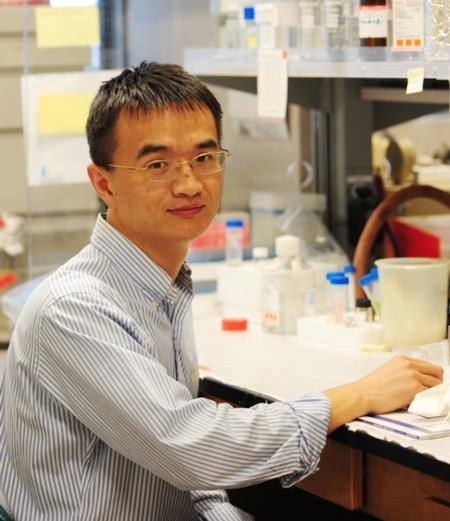
Corresponding author Hammock, a distinguished UC Davis professor who holds a joint appointment with the Department of Entomology and Nematology and the Comprehensive Cancer Center, praised Zhang's “amazing record while he was a postgraduate at UC Davis, and now in Food Science Department at the University of Massachusetts, where he recently received tenure.”
Zhang mentored two co-authors of the paper: Yuxin and Weicang Wang, both formerly of the Department of Food Science, University of Massachusetts and now with the Hammock lab.
“I feel so lucky that Yuxin and Weicang have joined my laboratory,” Hammock said. “The drugs studied in this PNAS paper are now in human clinical trials and on a path to replace opioid analgesics for pain treatment. I hope the continuing work of Guodong, Weicang and Yuxin will evaluate them as treatments for a variety of inflammatory bowel diseases.”
Andreas Baumler, professor and vice chair of research in the UC Davis Department of Medical Microbiology and Immunology, who was not affiliated with the study, said: “Obesity-induced gut leakage and bacterial translocation can be ameliorated by targeting microbes with antibiotics, suggesting that the microbiota contributes to disease. However, the work by Zhang and co-workers suggest that rather than targeting the microbes themselves, obesity-induced gut leakage and bacterial translocation can be normalized by silencing a host enzyme, which identifies host metabolism as an alternative therapeutic target.”
In addition to Hammock, Zhang, Yuxin and her husband Weicang, the other eight co-authors on the team are:
- Jun Yang, Sung Hee Hwang, and Debin Wan of the Hammock lab, UC Davis Department of Entomology and Nematology, and UC Davis Comprehensive Cancer Center
- Kin Sing Stephen Lee, formerly of the Hammock lab, and Maris Cinelli, both of the Department of Pharmacology and Toxicology, Michigan State University, Lansing
- Katherine Sanidad and Hang Xiao, Department of Food Science and the Molecular and Cellular Biology Graduate Program, University of Massachusetts, Amherst
- Daeyoung Kim, Department of Mathematics and Statistics, University of Massachusetts, Amherst
The abstract: “Intestinal barrier dysfunction, which leads to translocation of bacteria or toxic bacterial products from the gut into bloodstream and results in systemic inflammation, is a key pathogenic factor in many human diseases. However, the molecular mechanisms leading to intestinal barrier defects are not well understood, and there are currently no available therapeutic approaches to target intestinal barrier function. Here we show that soluble epoxide hydrolase (sEH) is an endogenous regulator of obesity-induced intestinal barrier dysfunction. We find that sEH is overexpressed in the colons of obese mice. In addition, pharmacologic inhibition or genetic ablation of sEH abolishes obesity-induced gut leakage, translocation of endotoxin lipopolysaccharide or bacteria, and bacterial invasion-induced adipose inflammation. Furthermore, systematic treatment with sEH-produced lipid metabolites, dihydroxyeicosatrienoic acids, induces bacterial translocation and colonic inflammation in mice. The actions of sEH are mediated by gut bacteria-dependent mechanisms, since inhibition or genetic ablation of sEH fails to attenuate obesity-induced gut leakage and adipose inflammation in mice lacking gut bacteria. Overall, these results support that sEH is a potential therapeutic target for obesity-induced intestinal barrier dysfunction, and that sEH inhibitors, which have been evaluated in human clinical trials targeting other human disorders, could be promising agents for prevention and/or treatment.”
The research was funded by grants from the National Institute of Food and Agriculture, U.S. Department of Food and Agriculture (USDA); National Cancer Institute; USDA Hatch Grant; National Institute of Environmental Health Sciences (NIEHS) Superfund Research Program; and a National Science Foundation.
According to the CDC, many of obesity-related conditions that lead to diseases are preventable. In 2008, the estimated annual medical cost of obesity in the United States tallied $147 billion. The medical cost for obese individuals averaged $1,429 higher than those of normal weight.
Contact: Bruce Hammock, bdhammock@ucdavis.edu

- Author: Kathy Keatley Garvey
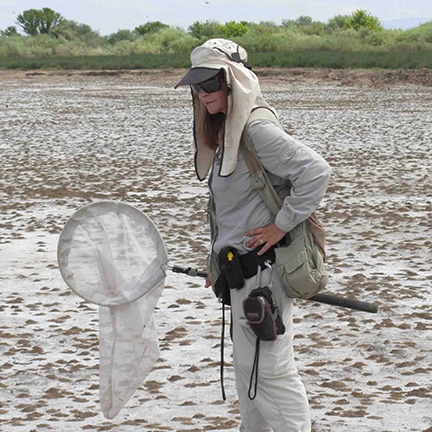
The scenario begins when aggregations of beetle larvae of Meloe franciscanus emit chemical signals that mimic the sex pheromones of female bees luring male digger bees to make contact. The Meloe larvae then attach to males bees on contact, Habropoda pallida, from California's Mojave Desert and H. miserabilis from the coastal dunes of Oregon.
During subsequent copulations, the larvae transfer from males to females, hitching a ride on female bees to their nests, where the larvae feed on the provisions and the bee egg, and emerge as adults the following winter, said Saul-Gershenz. The research paper, “Deceptive Signals and Behaviors of a Cleptoparasitic Beetle Show Local Adaptation to Different Host bee Species,” appears in the current edition of Proceedings of the National Academy of Sciences (PNAS).
In solving the puzzle, the scientists tested whether geographically isolated populations of M. franciscanus larvae--from Oregon's coast and California's Mojave Desert--use local adaptations to exploit their respective hosts, H. miserabilis and H. pallida.
“Interestingly, male H. miserabilis were attracted to conspecific females and to aggregations of local Meloe larvae, but not to male bees,” Saul-Gershenz said. “Importantly, male bees of both bee species were more attracted to local parasite larvae than larvae from the distant locale because the larvae tailored their pheromone-mimicking blends to the pheromones of their local hosts. Additionally, the larval aggregation adapted their perching height at each location to the patrolling height of local male bees.”
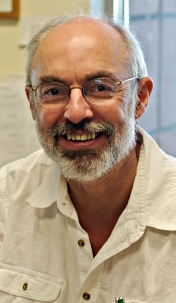
In their abstract, the scientists wrote: "Chemosensory signals play a key role in species recognition and mate location in both invertebrate and vertebrate species. Closely related species often produce similar but distinct signals by varying the ratios or components in pheromone blends to avoid interference in their communication channels and minimize cross- attraction among congeners. However, exploitation of reproductive signals by predators and parasites also may provide strong selective pressure on signal phenotypes. For example, bolas spiders mimic the pheromones of several moth species to attract their prey, and parasitic blister beetle larvae, known as triungulins, cooperatively produce an olfactory signal that mimics the sex pheromone of their female host bees to attract male bees, as the first step in being transported by their hosts to their nests.”
“In both cases, there is strong selection pressure on the host to discriminate real mates from aggressive mimics and, conversely, on the predator, parasite, or parasitoid to track and locally adapt to the evolving signals of its hosts,” the co-authors pointed out. “Here we show local adaptation of a beetle, Meloe franciscanus (Coleoptera: Meloidae), to the pheromone chemistry and mate location behavior of its hosts, two species of solitary bees in the genus Habropoda. We report that M. franciscanus' deceptive signal is locally host-adapted in its chemical composition and ratio of components, with host bees from each allopatric population preferring the deceptive signals of their sympatric parasite population. Furthermore, in different locales, the triungulin aggregations have adapted their perching height to the height at which local male bees typically patrol for females. "
Saul-Gershenz said that the study “provides strong evidence for two different but complementary types of local adaptation in geographically isolated populations of a parasitic insect.” Specifically, the beetles locally adapt their deceptive chemical signals to the differing pheromone blends of their local host species and “the local nest parasites are significantly more attractive to male bees than nonlocal parasites, using transplant experiments.” The scientists identified the attractant blends for the two host species and the compounds that the beetle larvae produce to attract their hosts. They also showed that the two parasite populations have evolved divergent host-matching behaviors.
“The blister beetle Meloe franciscanus has turned out to be an engaging research subject, commented Saul-Gershenz, who received her doctorate in entomology from UC Davis, studying with Neal Williams and Steve Nadler, professor and chair of the UC Davis Department of Entomology and Nematology. She is now an associate director of research, Wild Energy Initiative, John Muir Institute of the Environment, UC Davis. “The larvae cooperate with their siblings for a brief period; they mimic the pheromone of their hosts; they are locally adapted to different hosts both chemically and behaviorally; and their emergence times are plastic across their geographic range. It has been fantastic to unravel this species' puzzle.”
She credited the counsel of the “true native bee icons in my field"--Robbin Thorp, UC Davis distinguished emeritus professor of entomology; research entomologist Jim Cane, Agricultural Research Service of U.S. Department of Agriculture; research entomologist Tom Zavortink, Bohart Museum of Entomology and former professor and chair of the University of Francisco Department of Biology; blister beetle (Meloidae) expert John Pinto, UC Riverside emeritus professor; and emeritus entomologist Rick Westcott, Oregon Department of Agriculture.
Future plans? Saul-Gershenz and Millar will continue exploring chemical communication signals as reproductive isolating mechanisms and the effect of eavesdropping parasites, parasitoids and predators on these signals. “I also plan to continue collaborating with Dr. Rebecca Hernandez and her lab members (UC Davis Department of Land, Air and Water Resources, and the Wild Energy Initiative of the John Muir Institute of the Environment) on the intersection of utility-scale solar energy development and our wildlife resources,” Saul-Gershenz said. In addition, she will continue her research on the impact on native bee diversity and pollination services from utility-scale solar development in the western deserts.
The research drew funding from Sean and Anne Duffey and Hugh and Geraldine Dingle Research Fellowship, the Community Foundation's Desert Legacy Fund, California Desert Research, Disney Wildlife Conservation Fund, and UC Davis Department of Entomology and Nematology fellowships.

